Learn Negative Space Watercolor Painting Techniques
Negative space sounds fancy, but it’s just the area around your subject. Paint the space, and trees, clouds, and buildings appear on their own. Here are 10 ways I use it in watercolor.

Negative space in watercolor painting sounds fancy, but it’s just the area around your subject. The “stuff you don’t paint.” Use it right, and suddenly trees, clouds, and buildings pop off the page without you ever drawing them.
This isn’t about perfection. It’s about training your eyes to see shapes differently — and letting watercolor do some of the heavy lifting for you.
Once I had the basics down, I stumbled into negative space painting — total game changer. Simple idea, huge impact. It’s insanely versatile and can be used a hundred different ways.
What Is Negative Space Painting?
- Positive space = the thing you’re painting (tree, barn, boat).
- Negative space = everything around it (sky, ground, shadows).
The trick is painting around your subject so the shape appears on its own. It adds depth, keeps your design balanced, and stops your work from looking flat.
Why Bother With It?
Because it’s a shortcut. You don’t always have to “paint the thing.” Paint the space around it, and the thing magically appears. Birch trees, clouds, windows, buildings — negative space can do the heavy lifting.
A Few Negative Space Ideas You Can Try
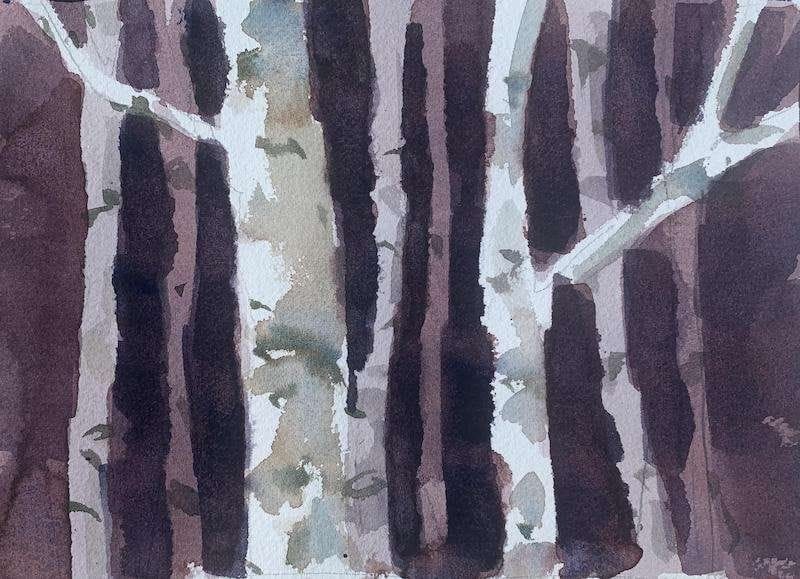
- Birch Trees → Stain the page pale pink or magenta, leave strips of white for trees, and darken the background layer by layer. Boom — a forest.

- Pine Trees → Paint darker trees, and suddenly the untouched edges reveal lighter trees behind them. Depth without detail.
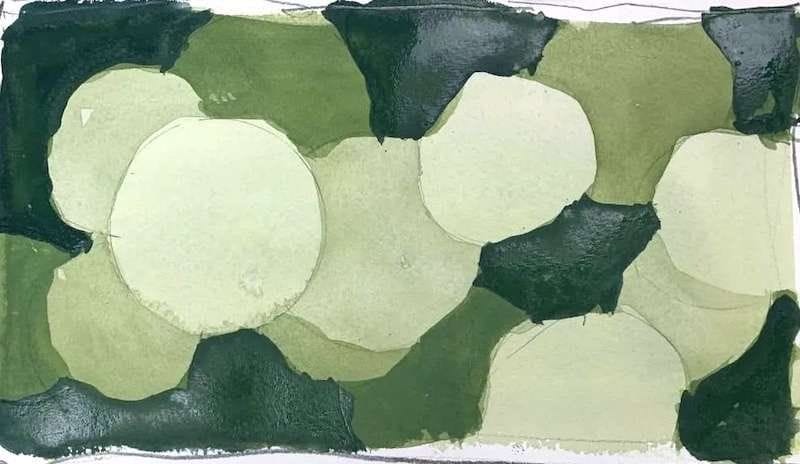
- Circles → Draw a bunch of circles with a cup. Wash the page, then leave a few untouched circles each layer. Great beginner drill.
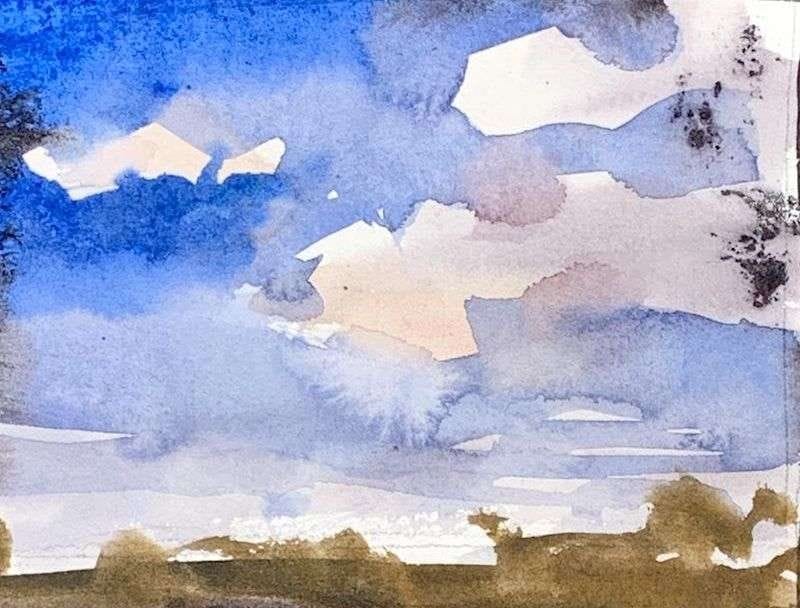
- Clouds → Paint the sky, not the clouds. Loose blue washes leave behind fluffy shapes.
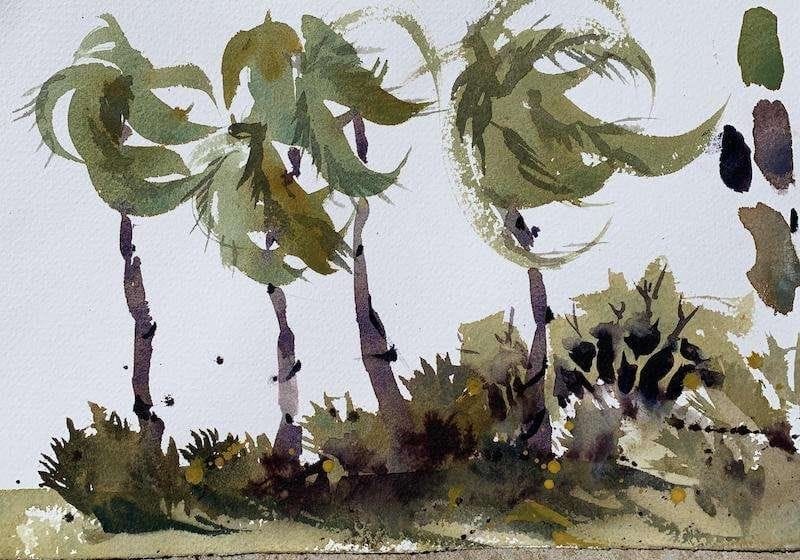
- Palmettos → Use darker strokes around the branches to let the leaves show themselves.
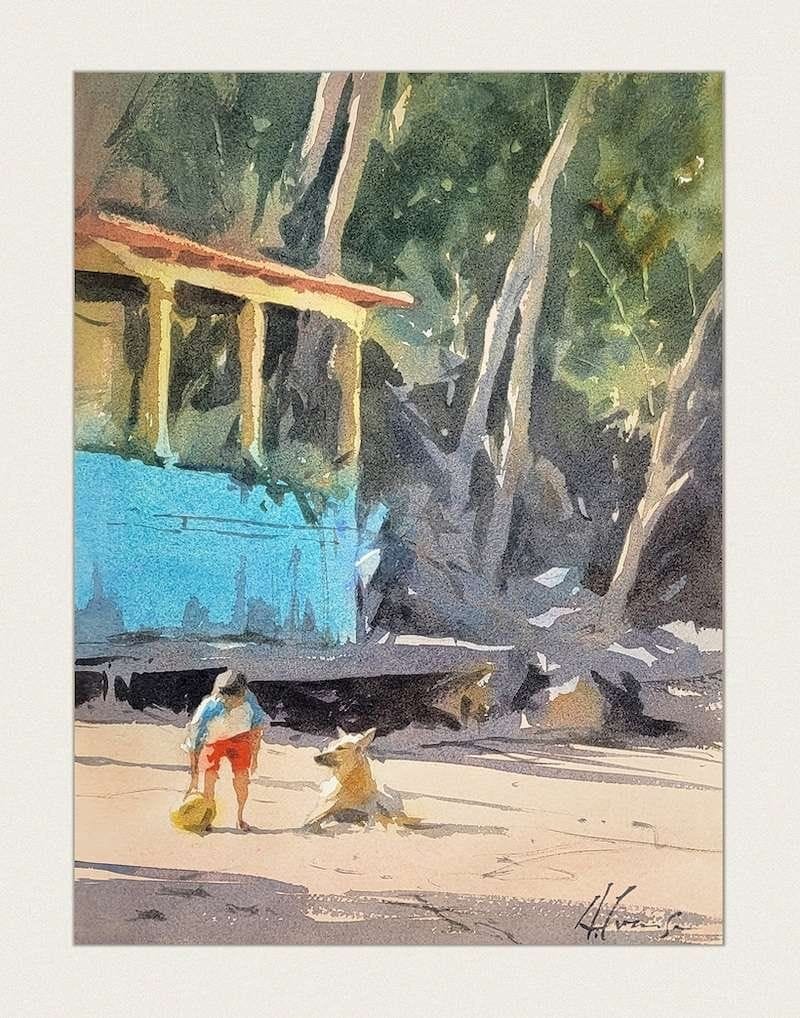
- Background Trees → Darken the space between trunks and branches — they’ll define themselves.
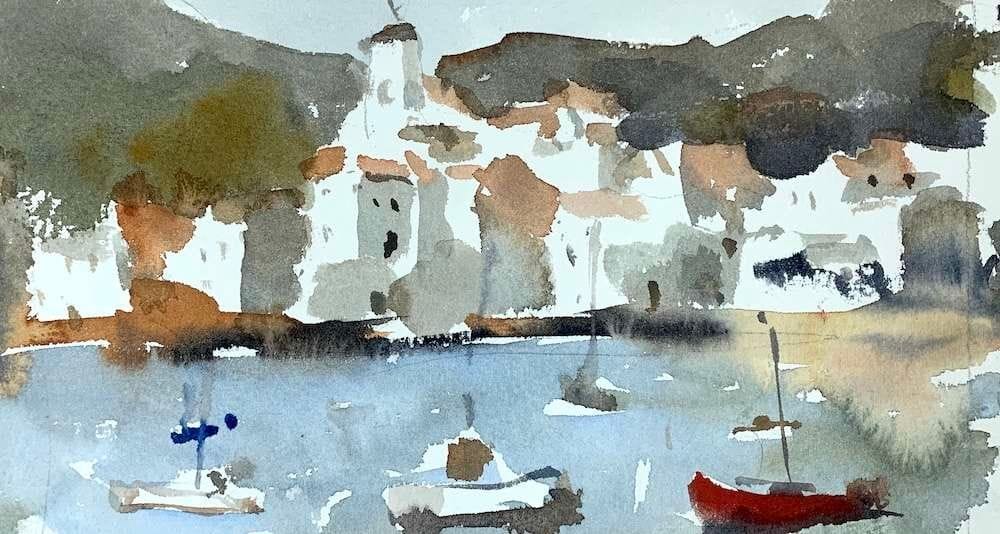
- White Buildings → Let the sky and mountains do the work, leaving the building shapes untouched.
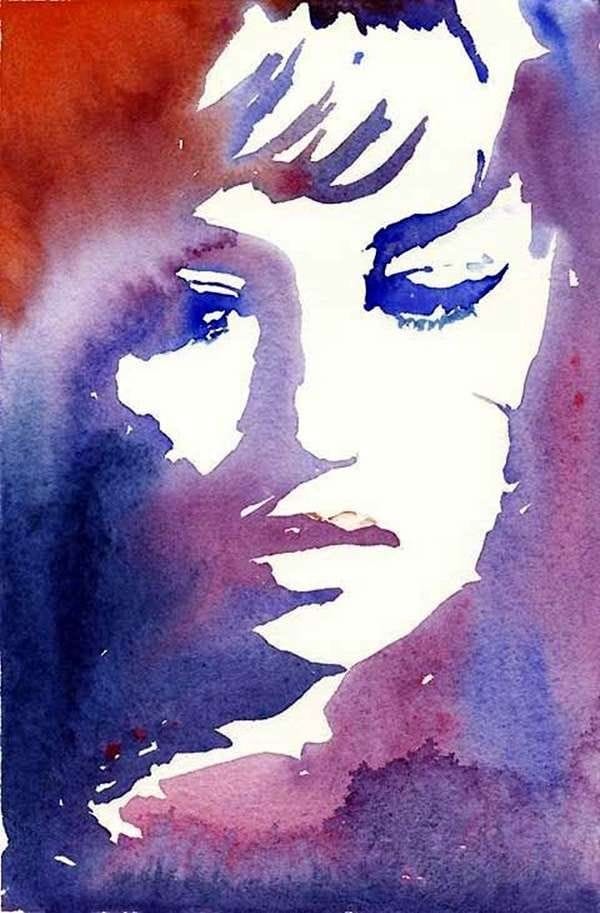
- Portrait → Skip the highlights, paint only shadow shapes, and a face appears.

- Arms + Hands → Clever designs where negative and positive swap roles. Forces you to think in shapes, not outlines.

- Unicorn in the Flame → A design trick, but shows how powerful leaving space can be.
Tips From the Garage
- Don’t overthink it — see shapes, not objects.
- Keep washes simple — darker background = stronger subject.
- Play with edges — sharp edges bring attention, soft ones fade away.
- Remember: it’s okay if it looks odd mid-process. Negative space clicks at the end.
Final Thoughts
Negative space isn’t some mystical art school concept. It’s a practical tool for making watercolors more dynamic. Whether it’s trees, clouds, or buildings, painting the “stuff around” is often easier than painting the thing itself.
Continue Learning
👉 Next stop: the Watercolor Tutorials Hub to keep building your skills.
If you enjoy these kinds of raw insights and loose watercolor demos, you’ll feel right at home here. Subscribe to Crafted by Robert and follow along as I share painting inspiration, tips, and behind-the-scenes stories straight from my garage studio. 👉 Subscribe to Crafted by Robert
Materials You’ll Need
Here are the materials I use all the time and have for decades. I only buy from Blick Art but feel free to shop where you prefer.
Recommended Watercolor Materials
-
Holbein Professional Watercolor Paints – 8 Essential Hues
Yellow Ochre, Cadmium Lemon Yellow, Ultramarine Blue, Cerulean Blue, Alizarin Crimson, Cadmium Red Light, Neutral Tint, Burnt Sienna -
Fabriano Artistico Watercolor Paper – 140lb Cold Press
Buy full sheets and cut into quarter sheets for best value -
Silver Jumbo Wash Brush
Great coverage, excellent quality for the price -
Princeton Neptune Point Rounds (No. 12 & 6)
Reliable and affordable detail & wash brushes -
Princeton Neptune Dagger (1/2")
Versatile size for lines, edges, and detail work -
Masterson Aqua Pro Palette
Durable, with deep wells for generous mixing space -
Gator Board
Lightweight, long-lasting painting support board -
Holbein White Gouache
Optional for highlights and fine details - Miscellaneous: plastic water containers, paper towels, masking tape
This post contains affiliate links. If you make a purchase through these links, I may earn a commission at no extra cost to you.




